Mode $06 is one of the nine diagnostic modes that is part of the OBD2 onboard diagnostics system on all 1996 and newer vehicles… which can be easily scanned with professional OBD2 scanner.
As originally created, Mode $06 was not designed for use by technicians. It was supposed to be “hidden” data used by the OBD2 system to find faults and configure fault codes.
It was not supposed to be a readily accessible scantool data for evaluating the operation of various components in the engine management and emission control systems.
Consequently, many older scan tools lacked the capability to access and display Mode $06 data. But as time went on, some very tech-savvy technicians discovered that Mode $06 contained a plethora of useful diagnostic information. It turned out to be the ultimate of diagnostic information — provided you can figure out how to read and use it.
Before we go any further, we should say that few counter professionals will ever use Mode $06 to assist a customer analyze a Check Engine light. Most of the scanners that parts stores employees typically use to perform plug-in diagnostic checks on customers’ cars are basic code fault readers or entry-level scanners.
So many of these diagnostic tools can’t even access Mode $06. But even if you have a scanner that has Mode $06 ability, it’s doubtful you would ever have the need to delve that far into the on-board diagnostics. That level of troubleshooting is best left to a professional mechanic with a lot of experience and know-how in scantool diagnostics arena.
With that said, it’s helpful to be aware of Mode $06 and how a mechanic can use it to troubleshoot a Check Engine light that comes back on after repairs have been made. In fact, if a technician knows how to use Mode $06 to look for specific types of faults, they can usually keep the MIL (Malfunctioning Indicator Lamp) out and prevent unnecessary comebacks.
Mode $06 is often the key to resolving such issues as:
- no-code driveability and emission faults
- identifying sensors and other components that are still operating within acceptable limits but are on the verge of failure
- reducing comebacks involving the catalytic converter
- EVAP system and EGR system repairs
- engine misfire
WHAT IS MODE $06?
Mode $06 data is information the OBD2 system tracks and compiles on “noncontinuous” monitors. It is tabulated in hexadecimal code (a base 16 number system that uses digits 0 to 9 plus letters A through F), which is the computer language that the PCM uses to manage things. The “$” symbol means the data is in hex code, not ordinary decimal numbers.
Fact that Mode $06 data is in hex code means it has to be converted into familiar decimal values for us to understand it. This requires some math and conversion factors, or scantool software that can do the translation for you.
You also need a reference chart from the vehicle manufacturer that identifies what component or system test each line of code refers to, and what the acceptable range of values are for that particular test. Only then can you determine whether or not a particular Mode $06 test value is good, bad or somewhere in the middle.
On OBD2 systems up to the introduction of Controller Area Network (CAN) electrical systems, there are two code identification tags for each line of data.
The first is the Test Identification (TID) that indicates the monitor test, and the second is the Component Identification (CID) that identifies the sensor or other component that is being tested. After that come the actual test results.
On CAN compatible vehicles, the TID is now called MID for Monitor Identification. It’s the same thing with a different name. Better yet, the MID test IDs have been standardized across different vehicle makes and models.
Depending on the the capabilities and software in the reader or scanner software you are using, the hex code TID and CID values may be translated into plain English (or Spanish) followed by the hex code or decimal test results, the range of acceptable values for that particular test, the units of measure for that test (voltage, pressure, etc.), and a PASS or FAIL indication.
The following is a partial list of the Mode $06 monitor tests that can be accessed on a late model Ford vehicle with a CAN electrical system:
MID$01 – Oxygen sensor
MID$02 – Oxygen sensor
MID$03 – Oxygen sensor
MID$05 – Oxygen sensor
MID$06 – Oxygen sensor
MID$07 – Oxygen sensor
MID$21 – Catalyst monitor
MID$22 – Catalyst monitor
MID$31 – EGR monitor
MID$32 – EGR monitor
MID$33 – EGR stepper motor
MID$3A – EVAP monitor
MID$3B – EVAP monitor
MID$3C – EVAP monitor
MID$71 – Air injection monitor
MID$A1 – Misfire monitor
MID$A2 through MID$AB – Misfire monitors for each cylinder
Within each of these monitor tests are additional subtests of various components. For example, within the MID$01 oxygen sensor monitor is a CID$11 O2 sensor switch point test, a CID$80 O2 sensor signal amplitude test and a CID$81 O2 sensor heater circuit amperage test.
Under the MID$31 EGR monitor there is a CID$80 delta pressure upstream test for the differential pressure (DPFE) sensor, a CID$81 delta pressure downstream test, a CID$84 delta pressure EGR leak check test, and a CID$85 delta pressure EGR flow test.
Each of these tests has an upper and lower limit that is programmed into the PCM by the calibration values for that particular year, make and model of vehicle.
The acceptable range of test results for each CID is determined by the vehicle manufacturer. Cut points are then set to assure emissions compliance.
FAIL or PASS?
As long as all of the components that are being monitored and tested by the OBD2 system pass, no codes are set and the Check Engine light remains off. If a component fails a test, it won’t necessarily set a code and turn on the Check Engine light.
It depends on the component that failed the test, how many times it failed the test (multiple failures may be required from some tests before OBD2 will set a code), and based on whether or not the test has actually run because another fault has prevented the test from running.
An oxygen sensor fault, for example, will prevent any of the catalyst monitor tests from running.
Why?
Because the OBD2 system requires reliable inputs from all of the upstream and downstream O2 sensors to check catalyst efficiency. If the vehicle has a bad upstream or downstream O2 sensor, it can’t compare before and after readings to calculate converter efficiency.
As a result, an O2 sensor component test failure will prevent the catalyst monitor from running its tests. It’s crucial to keep this in mind when reviewing Mode $06 data because a failure in one test may prevent other tests from running.
Here’s another fact of Mode $06: Even if a sensor is functioning within the established limits for a particular CID test, you can’t always assume the sensor is functioning normally. If it is near the upper or lower limit of the acceptable test range, it may be enough to cause a noticeable driveability or emissions problem.
For example, say one of the oxygen sensors is lazy or is biased rich or lean. It may not be bad enough to fail its CID tests, but it might be sluggish or biased enough to throw off the air/fuel mixture, resulting in a loss of fuel economy, poor throttle response or an engine misfire.
That’s why you need to look closely at the CID test results for that sensor in Mode $06 so you can see how close the sensor is operating to its upper and lower limits. If the test results are just within the limits, it would tell you the sensor is probably causing a problem and will soon fail. Time to replace it with a new one.
FINDING THE REAL CAUSE
In some cases, OBD2 may set a fault code for a problem that is being caused by something else. This includes lean fuel mixture codes, misfire codes and catalyst efficiency codes.
A vehicle cannot pass an OBD2 plug-in emissions test if the Check Engine light is on. You have to read and clear the code, diagnose the fault and make the required repairs so all the OBD2 monitors will run and pass.
Let’s suppose the car failed an OBD2 plug-in emissions test because of a P0420 catalyst efficiency code. Should you replace the converter, the oxygen sensors, or what?
Here’s how Mode $06 can help…
By looking at the CID test results data, you can see which catalyst test failed. Then you can look at the various CID tests for the upstream and downstream oxygen sensors to see if perhaps one or more sensors are lazy or biased, and are affecting the test results.
In some instances, you may find the O2 sensors are all functioning well within their normal limits, but catalyst efficiency is being affected by a crack or pinhole in an exhaust manifold, Y-pipe or flex pipe ahead of the converter that’s leaking air into the exhaust.
EVAP codes are always a pain because EVAP problems can be difficult and time-consuming to diagnose. One can spend hours with a smoke machine trying to find pinhole leaks when the real fault may be in the canister purge control solenoid, a vent solenoid or the fuel pressure sensor in the fuel tank.
Again, one can use Mode $06 to look at the various EVAP component tests to see why a particular code might have set. One can also look at the various EVAP test results to make sure all of the components are well within range and not operating near their minimum or maximum threshold limits.
Though OBD2 performs a long list of component self-tests, sometimes a test limit may be set too high or too low, causing codes to set unnecessarily.
For example, a vehicle may be setting a misfire code repeatedly because the maximum limit for misfires was set too low.
The vehicle manufacturer may revise the limit and offer a new calibration that can be downloaded and loaded into the vehicle’s PCM. That’s the beauty of reflashing PCMs.
It allows changes in calibration to be easily updated (assuming you have a J2534 pass-through tool or a scan tool with flash capabilities).
BOGUS DATA
Another thing to be on alert for when viewing Mode $06 data are TID/CID tests that contain old data or bogus data.
On some Ford V6 applications, Mode $06 will report misfire rates for cylinders that don’t exist.
The CID test results may show high misfire rates for cylinders 7 and 8. Of course, there are no cylinders 7 and 8 in a V6. It’s a programming glitch that OBD2 ignores as it monitors misfires. But if you don’t know that, you may assume the engine has a misfire problem.
The same can apply to other test lines as well. If the vehicle is not equipped with a particular sensor or component, there may be bogus data displayed for that test result.
The bottom line is that Mode $06 is an advanced diagnostic mode that allows technicians to peer deep into the inner workings of the OBD2 system.
It requires a OBD2 scanner that can access and display the TID and CID test results, and an understanding of the data that is displayed.
Can read more about Mode 06 here.


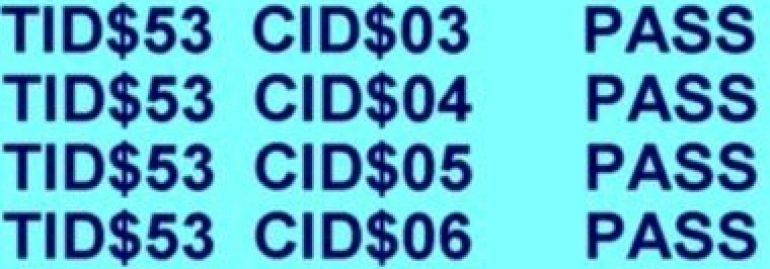
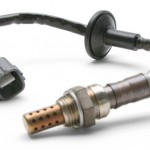
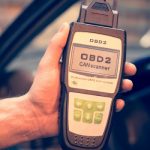
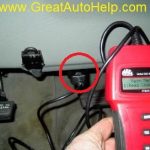
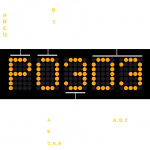
Never explained so well. So in other words, OBD2 applications can get Mode 6, thus also view VIN number and car model/year.
Mode 06 explained so well, I’d pay for this article. Answered all our questions as we’re attending auto mechanic course.
Mode $01 — Identifies what powertrain information is available to the scan tool, lists the status of the OBD II self-check monitors (some of which are continuous or on-going while others are non-continuous and only run when certain operating conditions are met), calculated values (airflow, engine load, fuel trim, etc.), and all of the available sensor values (which are referred to as PIDs or parameter identifications). Some Mode $01 data may be available on some code readers and entry-level scan tools.
Mode $02 — Is for more advanced diagnostics, and is usually only available on full-feature scan tools. This mode displays freeze-frame data (data captured and recorded when a fault occurs). How much data is stored depends on the capabilities of the vehicle computer. Some may store freeze-frame data for multiple codes while others can only store data for the most recent code.
Mode $03 — Lists stored five-digit diagnostic trouble codes, and is accessible by all code readers and scan tools (though some code readers may only display P0 codes, and not P1 codes). Full-feature scan tools also can access other codes (body, ABS, HVAC, airbag, etc.) that are available on the vehicle.
Mode $04 — Used to erase stored fault codes and to reset the OBD II readiness monitors. Available on most code readers and scan tools.
Mode $05 — Available primarily on full-feature scan tools, this mode displays the oxygen sensor monitor screen and oxygen sensor test results, including minimum and maximum voltages. This mode is helpful for diagnosing O2 sensor problems as well as air/fuel mixture problems.
Mode $06 — An advanced diagnostic mode available on most full-feature scan tools for reading actual test values for the noncontinuous monitors. Very useful for no-code diagnosis, detecting pending problems and verifying repairs. Test values for Mode $06 are displayed in hex code, which requires special software to translate or vehicle-specific reference charts.
Mode $07 — Available on some code readers and most scan tools, shows the test values for continuously monitored systems. If the monitor has run and no faults are found, the vehicle can pass an OBD II plug-in emissions test.
Mode $08 — Available only on full-featured scan tools, this mode allows bidirectional communication between the scan tool and vehicle so the scan tool can run various self-tests by sending commands to the powertrain control module (PCM).
Mode $09 — Used to display vehicle information such as VIN, PCM
calibration, etc.
oes anyone have any lookup charts or documentation on Toyota OBD-2 Mode $06 data?
I’m trying to troubleshoot an EVAP problem and being able to make use of the Mode $06 data I’m getting on my scantool would be helpful, yet I can’t find Toyota’s vendor-specific data.
This is the closest I can find:
http://alflash.com.ua/OBDII/PIDs.pdf
This only tells me what each $TID correlates to but not min and max values since those are specific to each manufacturer.
I couldn’t find it anywhere in the Factory Service Manual, but I only looked in a couple of spots and not every single PDF within the whole manual (there are like 200).
Explains very well
If you look at the mode $06 data on a healthy running car (impossible now since no new cars have mode $06 after 2004), you may see very small numbers appear on the random misfires TID $56.
Keep in mind this isn’t always due to true misfires. Crank noise or bumps in the road can cause this number to rise. His point was that people may freak out that there is a number there at all and think there is a problem with their car when there really is not.
The car runs the misfire test when the TID $56 fails due to too many accumulated possible misfires over x time.
Thats when it will search for real misfires and display them for individual cylinders. The TID $56 is very inaccurate for showing actual misfires since its very sensitive and any small thing will say its misfiring.
My 2006 Ford Escape displays Mode 6 data via BlueDriver (OBDII scan tool).
My Bluedriver scanner says my 2004 Buick Lesabre Custom doesn’t support Mode 6. Is that a true statement?
Mode 6 is supported on this 2003 Buick Lesabre Limited that I have in the garage right now. I found this page while trying to find out what is the: “Component Id $60 TID $0C – Manufacturer Defined 33013 N/A 32768 Fail” cause.
Id $60 TID $0C
Did u find out what this means?
While the check engine light is a vital indicator of a potential problem, you may have wondered what the heck Mode 6 is. It’s like the “crystal ball” of the car. It can tell you what’s wrong with a component even before the check engine light comes on. For this reason, it’s important to learn how to read and understand this system before you turn your car off. Below are some definitions of what Mode 6.
The Diagnostic Trouble Code Mode $06 contains a wealth of diagnostic data. The mother lode of fault codes, this code is difficult to interpret because it uses hexadecimal data, which consists of digits 0 to 9 plus the letters A to F. The dollar sign is used to indicate that the data is hexadecimal. Once you understand how this information works, you can use it to diagnose faults in your car.
A lot of people are confused by the terminology used for Mode 6 diagnostics. The fact of the matter is that these codes have been around for years, and there is a wide range of possible causes. The most important thing to remember is that the Codes in this menu are estimates – they’re not actual numbers. To get a more accurate reading, you need to perform a manual inspection on your car and read the manual carefully.
A TID is an abbreviation for Test Identification Device, and it tells us what kind of test was performed on the vehicle. The O2 monitor will have several TIDs displayed on its display. The TID for the O2 sensor is the reaction time or switch point. This means that something is wrong with the O2 sensor. In this case, the solution is to replace the sensor. You can check the misfire count of the vehicle with the misfire check function in the vehicle’s diagnostic tool.
In addition to other engine diagnostic functions, Ford Mode $06 also performs misfire checking. Each misfire increases the misfire counter. If the count rises above a certain threshold, a trouble code will be generated. If the misfire count is below the threshold, however, no trouble code or notice will be displayed. However, misfires may still occur, especially under heavy loads or rapid acceleration.
This is a very comprehensive article about the mode $06 reference chart and how to use it to troubleshoot your car’s problems. I learned a lot about the mode $06 data and how it can reveal the hidden issues that are not detected by the check engine light. I think this article is very helpful for anyone who wants to understand the mode $06 data and how to interpret it using the reference chart. I also like the fact that the article provides examples and screenshots of the mode $06 data and the reference chart. Thank you for sharing this excellent information!
Article is a very detailed and informative guide on how to read mode 6 data. The article provides a clear explanation of what mode 6 data is and how it can help you troubleshoot your car’s problems. The article also shows how to use a scan tool to access the mode 6 data and how to interpret it using a reference chart. I think this article is very helpful for anyone who wants to understand the mode 6 data and use it to fix their car’s issues. I appreciate the fact that the article provides examples and screenshots of the mode 6 data and the reference chart. Thank you for sharing this excellent information!
This is the most information in one place that I’ve ever stumbled across . thanks to the writer of this source, greatly appreciated.
Mode $06 contains valuable diagnostic test data for non-continuous monitors, displayed in hexadecimal values that require conversion charts. It allows technicians to analyze sensor and component tests identified by specific IDs, compare results to ranges, diagnose hidden issues pre-empting MIL faults, identify root causes for illuminated codes, and make repairs to reduce vehicle comebacks.
I need OBD 2 Mode 6 help. It is a CA vehicle. 1997 ford F150 5.4L 4×4. What is test #52 component ID# 00. It is showing a failure. What component is involved with this test ?
Thanks for your help.